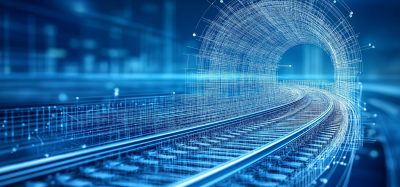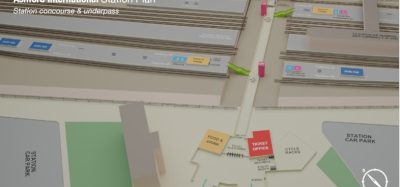Unlocking the value of IoT to transform rail freight operations
Posted: 25 June 2020 | ClearBlade | No comments yet
In an interview with Global Railway Review, Aaron Allsbrook, CTO and Founder of IoT and Edge software company, ClearBlade, explains that the rail freight industry has the desire to adopt new innovations, but there are still challenges to overcome to unlock the true value of those smart technologies.


What would you say is the biggest hurdle for the rail freight sector to overcome when trying to achieve smart rail freight networks?
Every business always has challenges when adopting new technology. The technology has to solve a problem while the business must react to the disruption and find a new equilibrium with the more modern capabilities. Rail, of course, has hurdles to overcome with introducing new smart technologies but, in some ways, it comes not from being able to adapt their business, but from the fact that so much technology exists already. Rail itself has been built on adopting enabling technologies since the first industrial revolution and has always questioned and looked for better ways. As such, it is tying together data streams from the last 20 years of technology that remains the biggest hurdle for adopting new technology.
Rail itself has been built on adopting enabling technologies since the first industrial revolution and has always questioned and looked for better ways.
Today, we see rail freight wanting to not replace equipment recorders but, instead, get those equipment logs into the hands of other people in the organisation in real time. We see rail freight wanting to monitor not only their newest switches with machine learning, but also their long relied upon manual switches. We see rail freight wanting to experiment with soon-to-come 5G networks, but also use their limited bandwidth radio installation. Rail freight overwhelmingly wants to continue to build ROI on their existing infrastructure. Consequently, the biggest hurdle sitting in front of any rail freight operator is identifying new technology that is ready to integrate with what is in the field today so that they can get the added value of smart technology.
We see rail freight wanting to experiment with soon-to-come 5G networks, but also use their limited bandwidth radio installation.
Additionally, this new smart information must be integrated into backend systems that includes legacy ticketing and asset management applications, or into new big data and artificial intelligence (AI) solutions. All of these point solutions that are difficult to manage themselves have to be integrated with different protocols and languages processing, which can be an overwhelming amount of data. Done poorly, support teams can spend unproductive hours poring through many alerts and alarms that prove to be non-issue. Of course, at ClearBlade, our core principle is that integration must happen between all vendors, and we work to make sure that we have the right extensions and open ways to share data between systems.
Do you think the rail freight industry has fully moved away from a ‘fix on fail’ approach?
I think we see an industry agreement to move beyond a ‘fix on fail’ approach, but truly predicting failure across all assets in the railroad will not be a big bang event, but rather an iterative strategy. What we do clearly see today is the start of monitoring in a better, more real-time and broadly visible way, with automated actions. This improved way means that we have more and more data about something that is off or abnormal before true failure occurs. In effect, we know of a small degree of track shift before it is an issue, we are aware of motors not throwing a switch fully before the switch fails and we can see gate up and down times are not within desired ranges before the crossing fails to activate entirely. This higher understanding, with more knowledge available to more people, makes for a railroad that does prevent true failure. Of course, as we build data and get a better understanding of how parts from different vendors fail, we can move to an even more predictive set of algorithms and usage models so that we can prevent failures with much greater efficiency and without the need for extreme urgency.
In what ways can IoT solutions help to improve the safety of rail freight/infrastructure engineers/workers?
Few industries have done such a good job of focusing on safety and building a culture of safety as the rail freight industry. With rail freight, you have so many moments where huge equipment is moving at high speeds, with low visibilities that engage both with employees and the public. Keeping the tracks safe is most important for protecting human life, but it does impact the business, as it needs to limit its liabilities and protect its brand. IoT solutions, especially those that can run in the field with local processing limited latency edge capability fit nicely to address all of these challenges.
Also, with IoT solutions, the ability to first understand the conditions of equipment and machines without having to have a worker physically onsite removes a core risk. With this new understanding, a digital twin is built of the overall rail yard, crossing or train consist, which allows for complex conclusions about where things are in relation to each other. This understanding prevents collisions and ensures that protective rules and operations are effective.
Keeping the tracks safe is most important for protecting human life, but it does impact the business, as it needs to limit its liabilities and protect its brand.
Lastly, this emerging digital railroad is now able to prevent catastrophe when it takes all of its understandings – like weights, heights, speeds, locations, track temp, impact, noise, event times, recorded logs, brake effectiveness and clearances – into a single picture on a single pane of glass. With ClearBlade, we are allowing rail freight to build this digital twin from any sensor or device data source and then understand what’s happening with rules and events. These rules capture a failing crossing or simply merge information sets from multiple locomotive data feeds. By understanding this and taking actions back into the existing tools for field maintenance, equipment and workers are kept safer.
To what extent do you think issues around cyber-security are a hinderance to the rail freight industry in utilising smart solutions?
ClearBlade’s rapid adoption across the United States has all been thanks to our ability to work within the constraints of rail’s security models.
Without a doubt, connecting any product – whether home or business – to the internet should be done with caution. Connecting national infrastructure that is critically important to commerce is doubly important. The rail industry has already put many practices in place that allow for the separation of networks logically and physically, such as security with locked bungalows and monitored environments. As freight operators adopt more and more IoT technology, they will have to bring many IT industry best practices into the operational domains of the field maintainers and supervisors. While many in the operational side of the house have relied on air gaps and obscurity, they will now need to employ core principles, such as authentication, authorisation, encryption, continuous updates and continual security audits. Because so much of what is already in place with rail has been scrutinised for security, and because internal IT is already enabled, I expect smart solutions that work within those constraints to be deployed with little hindrance. ClearBlade’s rapid adoption across the United States has all been thanks to our ability to work within the constraints of rail’s security models. On the opposite end, industrial companies with cloud-only hosted solutions, or startups offering new digital offerings, struggle significantly as they attempt to learn and adopt this more secure set of standards and domain best practices.
What advice would you give to a rail freight operator who is just beginning to realise smart monitoring is the way forward?
Certainly, there are lot of ways to digitalise the freight process with smart monitoring, but wading through the vendor options can be a bit overwhelming. What we have seen is that, after initial adoption, there is always a need to continue to improve, innovate and grow the solution.
With that in mind, someone should look for solutions that scale. This means scaling to ingest and process huge loads of data coming across many protocols. This strategy of working across any protocol is a key in future-proofing the investments.
…there are lot of ways to digitalise the freight process with smart monitoring, but wading through the vendor options can be a bit overwhelming.
Next, I recommend taking the security challenge head-on, as well. Understand how updates will occur, how data is protected and ensuring IT is onboard with the solution being brought in.
Lastly, I would encourage making sure that you have points of customisation that you can do yourself without the need for the smart monitoring vendor. Having to pay the vendor for small changes and updates makes for painfully slow progress and expensive enhancements. Solutions that allow for you to configure and manage the system yourself are critical to a successful deployment, as well as keeping your many business stakeholders involved and happy.
Related topics
Artificial Intelligence (AI), Big Data, Cargo, Freight & Heavy-Haul, Digital Twins, Digitalisation, Internet of Things (IoT), Technology & Software








